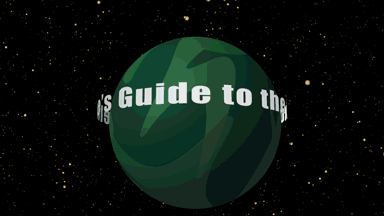Scienceline’s Guide to the Exoplanets: The Temperate Shadow
PSR B1620 b: Closer to Earth, in both space and form
Rahul Rao • April 13, 2020

Your favorite planets, and you didn't even know they existed. [Credit: Curtis Segarra | CC BY-NC-ND 2.0]
The Temperate Shadow
Ross 128 b
Discovered by: Xavier Bonfils, et al
Discovered: 2017
Distance from Earth: ~11 light-years
Mass: >1.35 Earth masses
Surface climate: Surprisingly temperate…maybe?
Habitable: Possibly.
From last week’s planet in an ancient enclave outside the Milky Way, we’re now moving much, much closer: the twelfth-closest star system to Earth, in fact.
Ross 128 is a tiny red dwarf, only a fraction of a percentage as luminous as the Earth’s Sun. Less than five million miles away lies a world of iron and rock, not too much bigger or more massive than the Earth. This is Ross 128 b.
Five million miles doesn’t seem very far at all; it’s only around a twentieth of the distance from the Earth to the Sun, and it’s far closer than Mercury, for instance. But because its star is so much smaller and less powerful than the Sun, Ross 128 b is probably much more like Earth. Astronomers believe that it’s around the very innermost edge of its star’s habitable zone, where liquid water could exist.
We do know of exoplanets that are both closer than Ross 128 b and in their respective stars’ habitable zone: Proxima Centauri b, for instance, only four-odd light-years from Earth. But Ross 128 b is interesting for another reason: because of how close it is to its parent star, astronomers suspect that the planet is tidally locked.
That means the same side of the planet always faces inwards — a day and a year are the same length. The Moon is tidally locked to Earth, for instance. In Ross 128 b’s case, one side of the planet would be perpetually basking in the light of its star, while the other side would be in eternal night, always facing outward.
It’s very likely this will be far from the last we hear of Ross 128 b. There’s a number of questions about the planet we still haven’t answered. If it’s tidally locked, then we don’t know what that actually means for a planet like this. We don’t know what its temperature actually is; it’s possible that the planet somehow reflects much of what touches it.
We don’t know what its atmosphere is like: we don’t know what gases you’d breathe standing on its surface, and just as importantly, we don’t know what the weather is like: we don’t know if winds somehow blow heat to the planet’s dark side. We don’t even know if it has an atmosphere.
But — no matter what else happens — with Ross 128 b a relatively Earth-sized planet in its star’s habitable zone, so close to Earth, it’s undoubtedly going to continue to interest for a very long time to come.